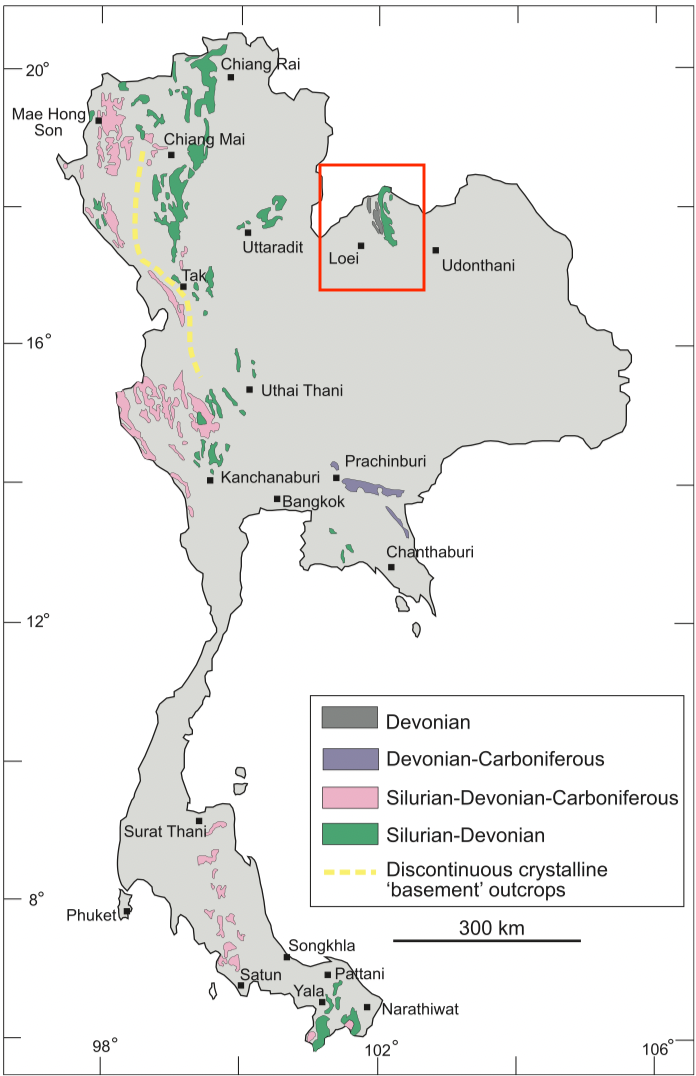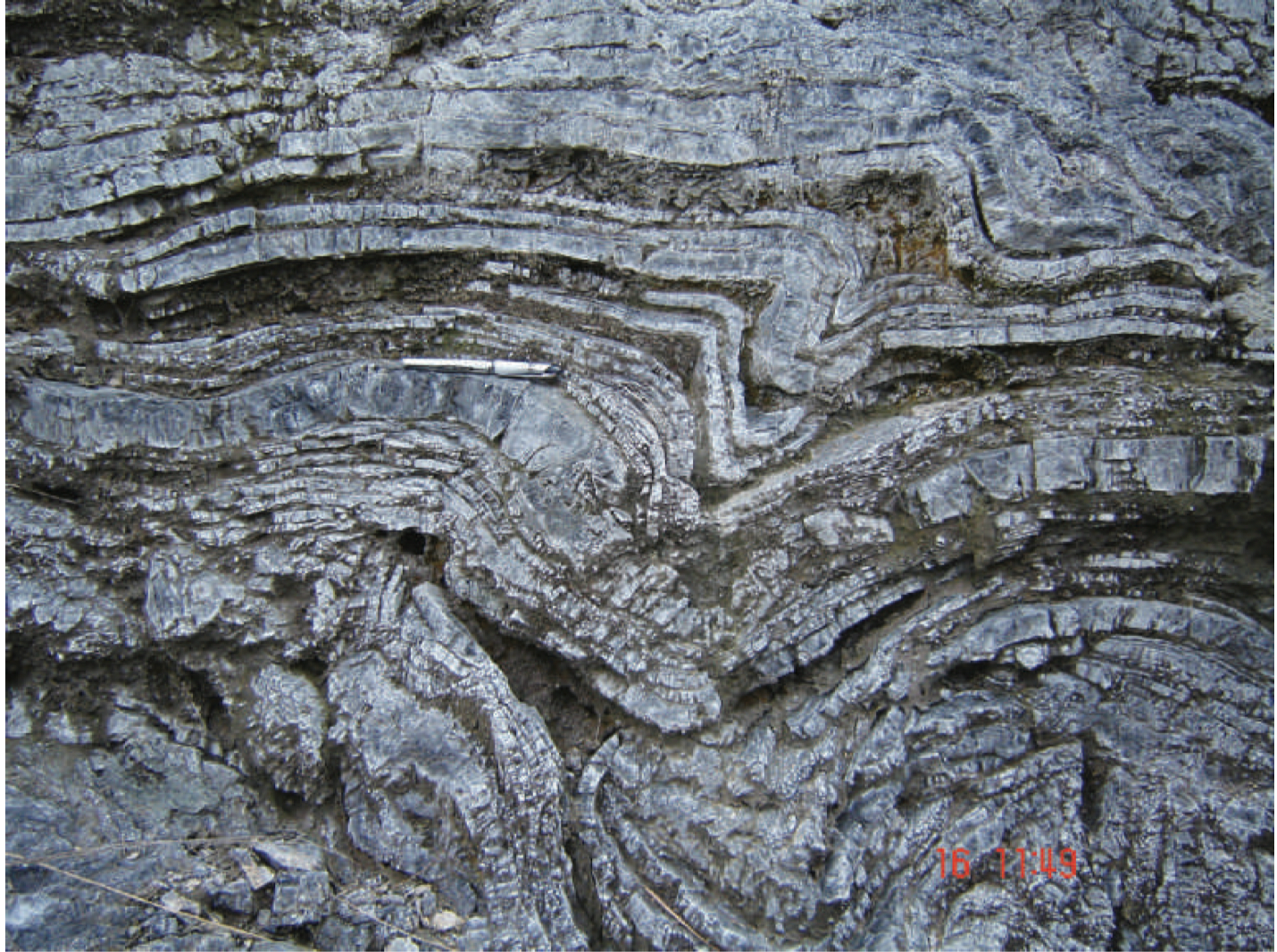Nong Dok Bua Fm
Type Locality and Naming
[Figure: Map of Thailand showing the distribution of the Devonian and closely associated Silurian and Carboniferous rocks. The belt of crystalline ‘basement’ rocks is mentioned in the text; they were previously thought to be Precambrian but radiometric dating shows them to be younger (Hansen & Wemmer 2011; Wongwanich & Boucot, 2011).]
Synonym: หมวดหินหนองดอกบัว
Lithology and Thickness
[Figure: Black banded chert and intercalated black siliceous shale exposed in a quarry on the east side of Highway 2108 (17846.178 0 N, 101855.620 0 E) south of Pak Chom, from which Y. Kamata has obtained radiolaria indicating a late Devonian age (K. Ueno, pers. comm. 2009). The beds are folded in an apparently random fashion with axial planes ranging from near vertical to near horizontal (photograph courtesy of M. F. Ridd.) (Wongwanich and Boucot, 2011)
The beds in this area were formerly referred to the Carboniferous Wang Saphung Formation of Charoenprawat et al. (1976), the uppermost Devonian to Middle Carboniferous Nong Dok Bua Member, Wang Saphung Formation of Bunopas (1988) or the Upper Devonian to Lower Carboniferous locally siliceous shale unit with local intercalations of greywacke, chert and quartzite of Chairangsee et al. (1990). ]
Relationships and Distribution
Lower contact
Upper contact
Regional extent
GeoJSON
Fossils
Later, Saesaengseerung et al. (2007a,b,C) described Late Devonian to Early Carboniferous radiolarian faunas, including Stigmosphaerostylus variospinax, Astroentactinia stellata, Astroentactinia multispinosus, Archocyrtium wonae and Archocyrtium riedeli from siliceous shale in a chert-clastic unit along the Mekong River near Wat Non Si Sa-at, Pak Chom city. Furthermore, highly contorted grey and black banded chert crops out in a quarry on the east side of Highway 2108 south of Pak Chom (Fig. 4.7) from which a late Devonian radiolarian fauna has been obtained by Y. Kamata (K Ueno, pers. comm. 2009) (Wongwanich and Boucot, 2011).
Age
Depositional setting
Additional Information
Correlation: Pak Chom chert Fm, Dok Du Fm (Department of Mineral Resources, 2007).

